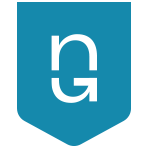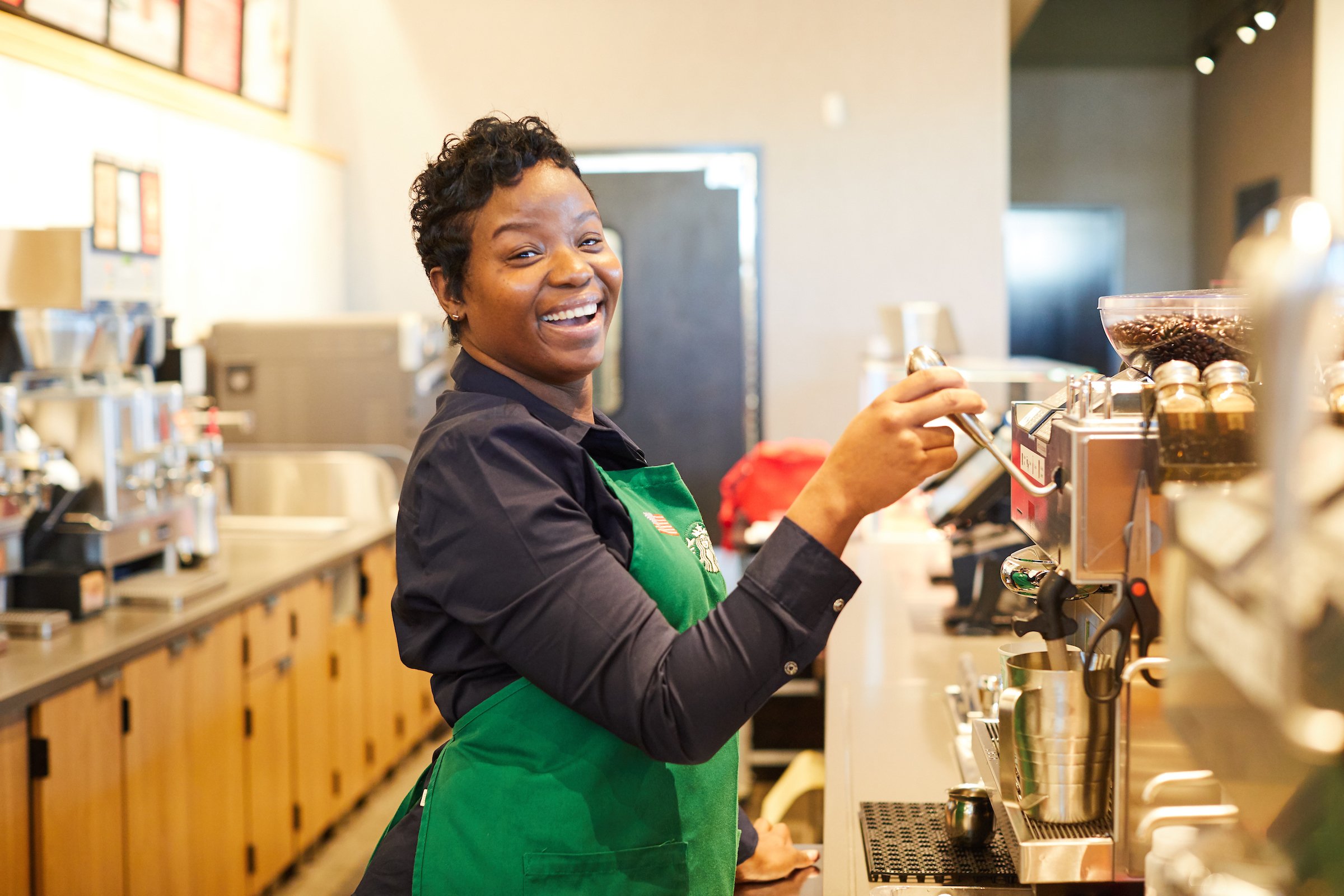
UX Design Process
Starbucks Siren Sense
Optimize Time and Energy in Stores Using IoT Data.
The Intention
The goal of this project started simple and practical: Improve the way partners check and log fridge temperatures across stores through an easy-to-use tablet application. This experience was previously completed on paper, which was time-consuming and difficult to track. And if improper temperatures weren’t caught soon enough, food could be wasted.
Internet-of-Things (IoT) technology now provides real-time status updates and alerts for connected equipment, while also empowering partners to resolve larger issues before they occur. This has allowed the application to expand in scope beyond temperature logging to manage all IoT sensors within a store.
Currently this app is used in 4,000 stores, and by the end of 2022, it will be in every North American store.
My Role
Senior UX Designer
UX Design
UX Writing
Visual Design
Extra Credit
Tactile – Seattle
Marcus Pape – UX Director
Michael Akers – Front End Development
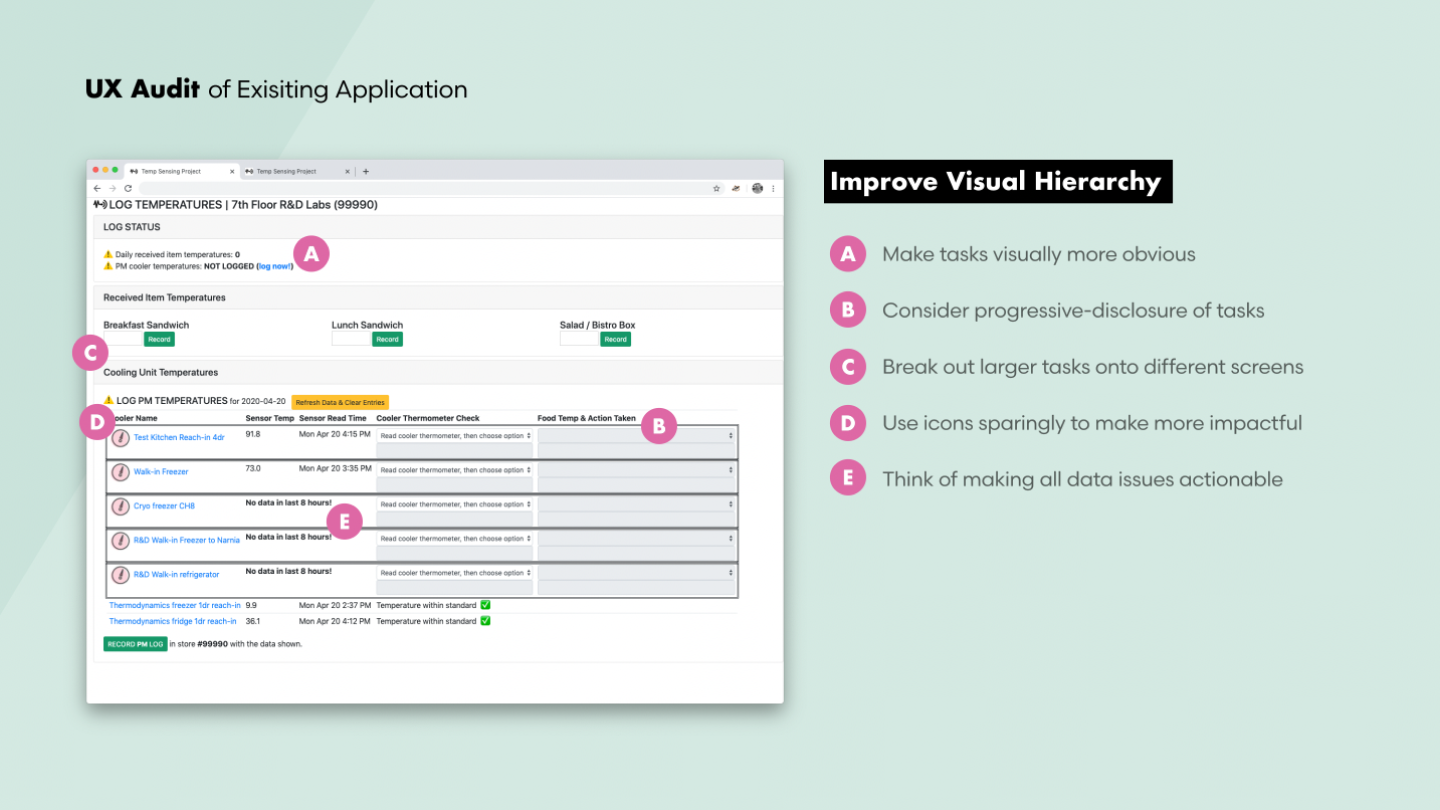
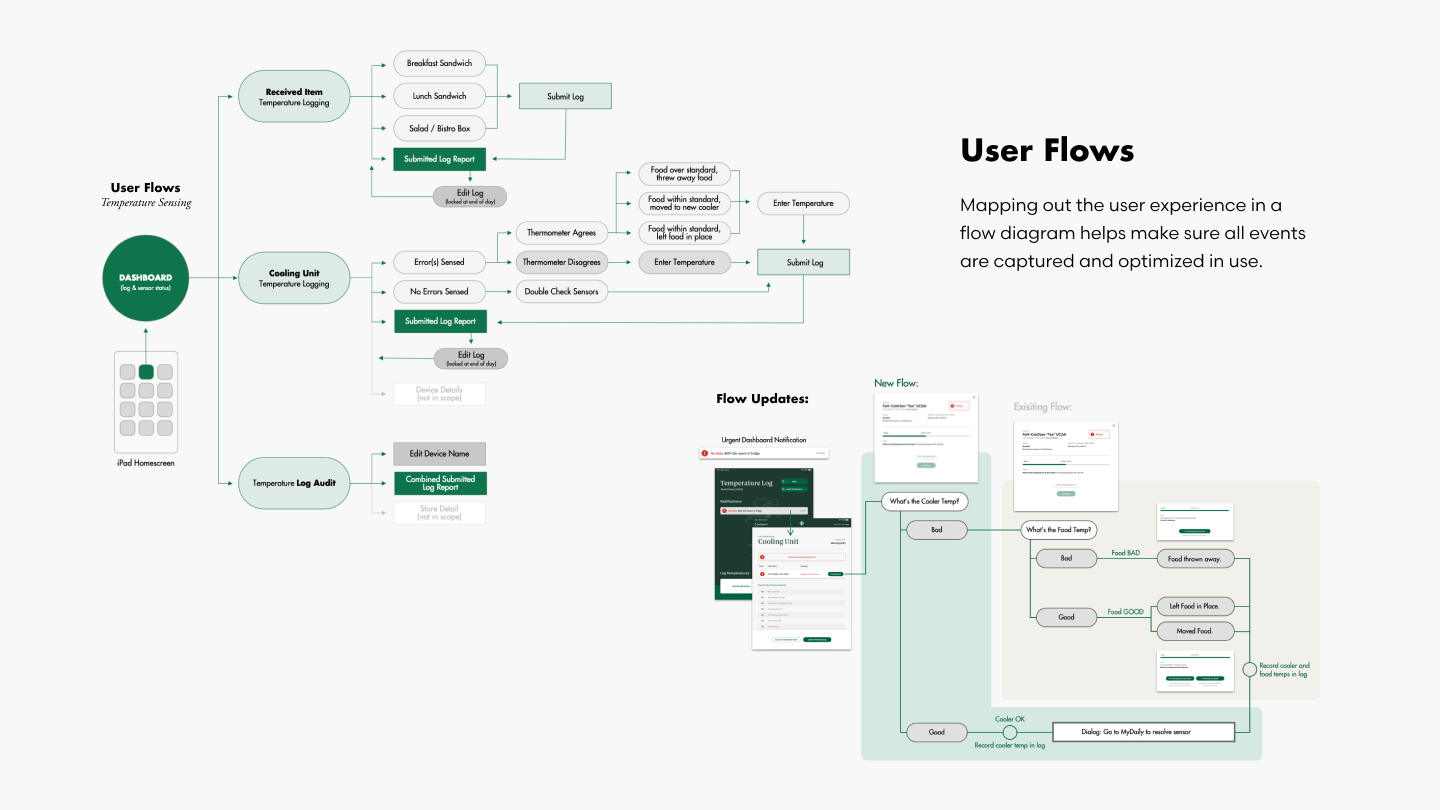
UX Auditing and Wireframing
Like the start of many UX projects, we began by collaborating with Starbucks to clearly understand the problems they are addressing. Sometimes this research is more formal, and at other times it’s more conversational.
For this project, we looked to see how could we notify store team members of immediate cooling issues sensed through IoT. How could we then educate those partners to see patterns in order to circumvent future trouble areas? Together we walked through the existing partner process of checking food and fridge temperatures, mapping the end-to-end experience for the user. We defined what successful interactions could be. And then identified ways that the mobile application could improve the process.
Through this open dialogue, we were able to get on the same page about the priorities and opportunities for the project. Once the Siren Sense team approved the User Flows (seen above), we used that as the framework to map out the larger journey details. By designing wireframes page by page (below), defining the experience of launching the application to completing tasks becomes clearer. As we progressed, we had weekly check-ins with Starbucks and their engineers to make sure every situation was accounted for.
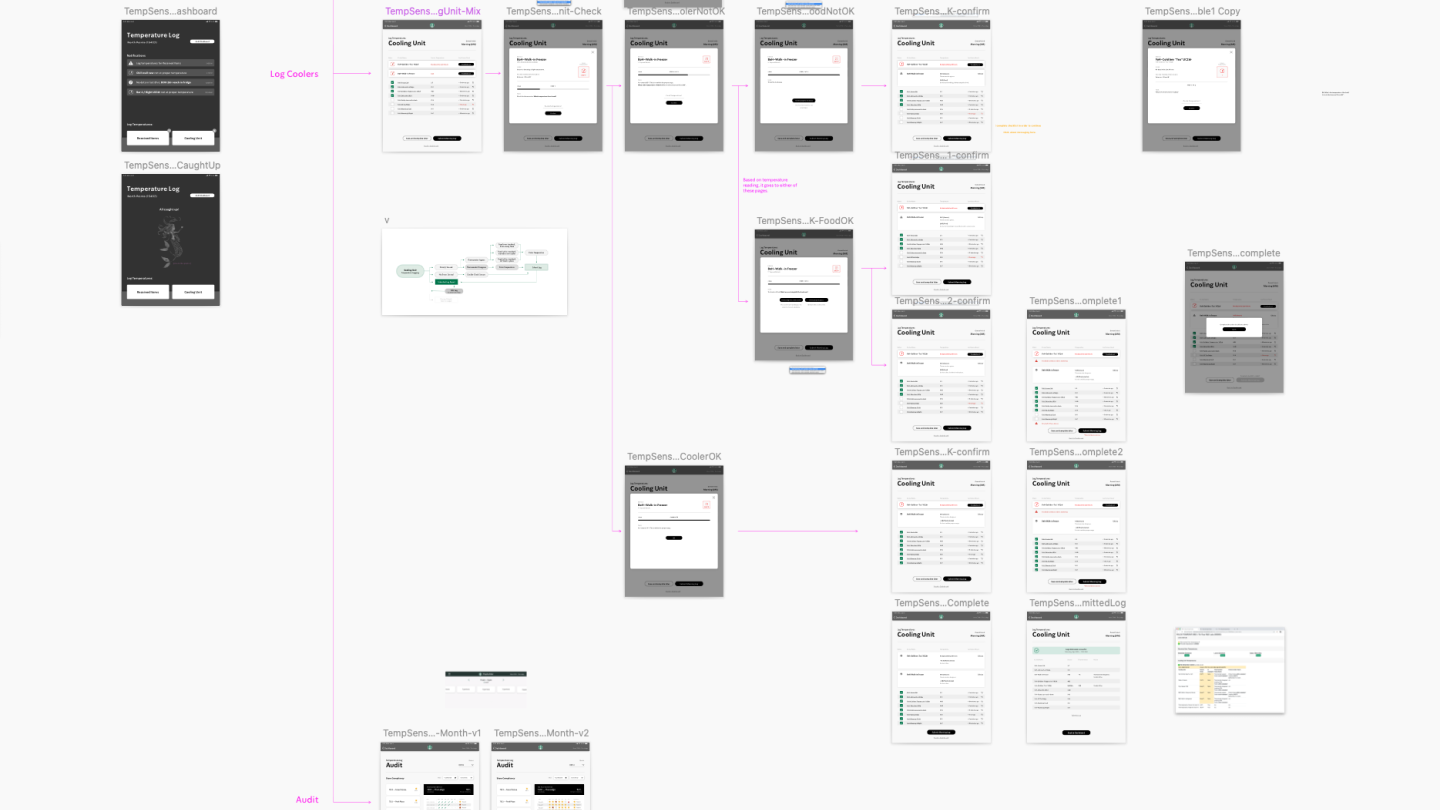
Functional Visual Design
Even though this application was designed to be simple, practical, and function-driven, Tactile believes great visual design is essential to usability by addressing information hierarchy and task highlighting. That’s why all of our UX Designers also work in visual design. Great products should not only look and function great but engage users with ease and enjoyment. And adding a little visual flourish can go a long way to helping people perceive more value in an experience (sometimes unconsciously). With this project, to increase the speed of delivery, our team took a hybrid approach of ramping up the fidelity of wireframes as we progressed.
With each check-in, designs evolved more naturally. Functionality and readability only improved when colors and visuals were added. By using a minimal color palette of warm tones with green, we maximized partner attention to needed tasks. Plus we sparingly used primary colors through icons to elevate statuses and issues. And by utilizing progressive disclosure of task steps, we minimized UI elements on screen to help with cognitive load. All of these small visual components led towards better usability for store partners.

Serving Up
Brand Standards
Starbucks has high quality brand guidelines and marketing materials. And they tirelessly work to keep that craft consistent across a diverse ecosystem.
For our part, we met with Starbucks brand designers to discuss how to seamlessly implement their guidelines into our experience. We leveraged their library of design components, while also creating new ones relevant to our application which would be shared back with them.

Delivering Great
Results, Faster
and Efficiently
Presenting great designs (outputted from design software) is only a portion of the larger process of delivering results. Our designer and developer spent weeks collaborating directly with Starbucks engineers to ensure our vision became reality. From edge-case designs to remote software deployment on iPads in physical stores, we had to clearly communicate intentions
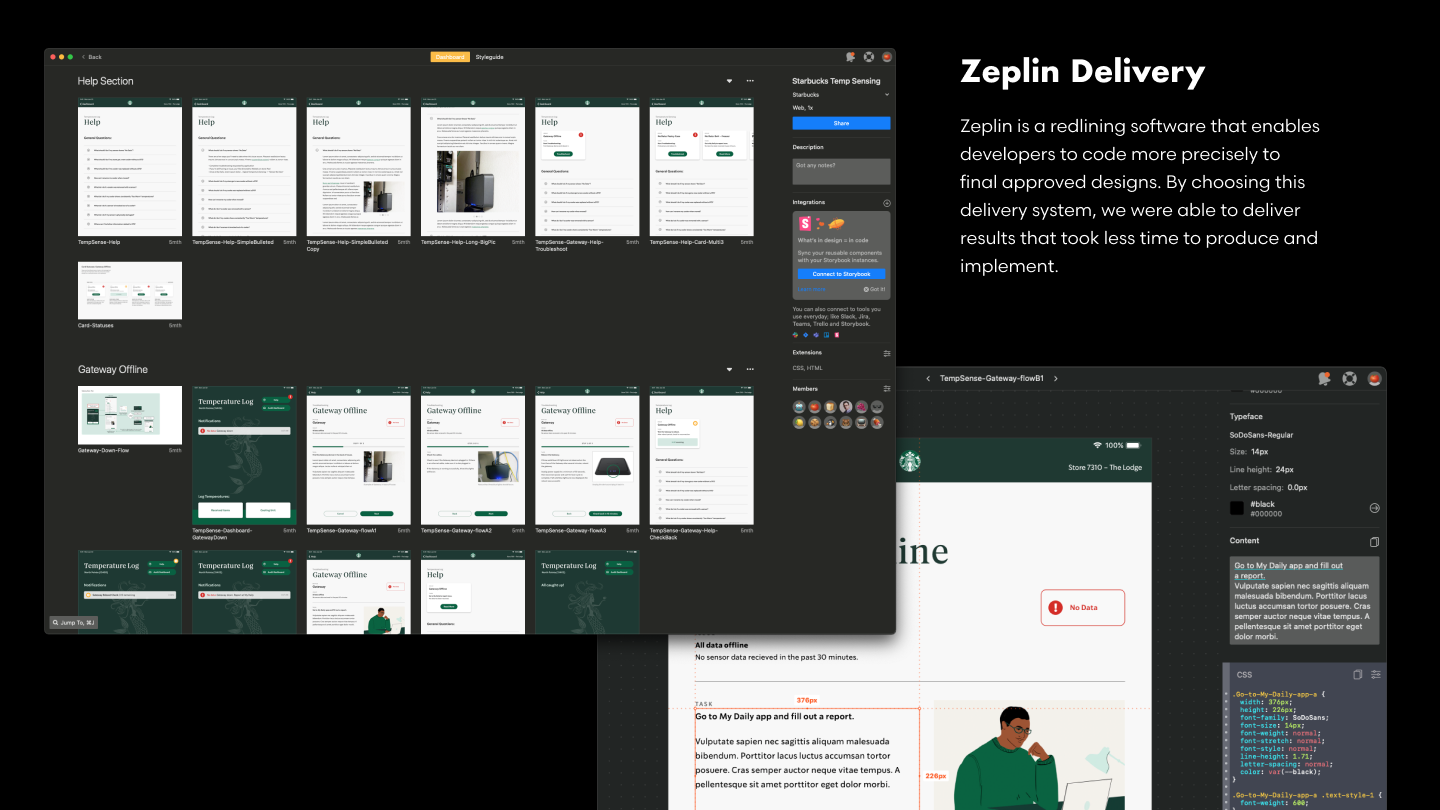
Data that Empowers People
With the final Siren Sense application rolling, the success of the project is three-fold. Technicians harnessing IoT technology are now able to diagnose refrigeration problems quicker in each cafe using the software. Through the app, store crew members are able to maintain these IoT sensors in a way that empowers them to understand the technology, while not relying on paper
clipboard tallies. And store managers are able to audit the data, seeing how their store success compares to others. The entire rollout went over so well that Starbucks came back to Tactile later to expand the scope of the project, refining the experience and adding more features.
Currently in 4,000 stores, and by the end of 2022, it will be in every North American Starbucks.

Quotes from Starbucks
“This is quality work and much better – great use of the space, and aesthetically pleasing. Additionally, the user flow looks great, and the new headers are perfect. Really nice. I look forward to seeing the implementation!”
— Principal Engineer at Starbucks
“Agreed, this is great! I can’t wait to get this in front of our store partners.”
— Project Manager at Starbucks

